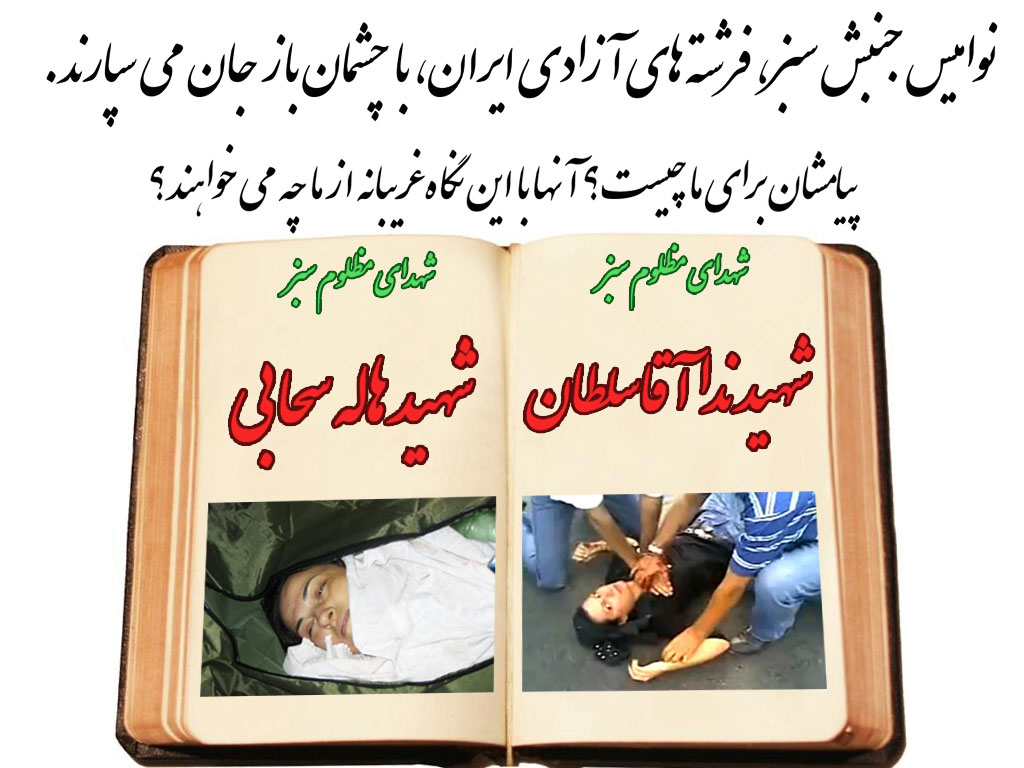Haleh Sahabi and Neda Agha Soltan
News emerged, hours after the event, that a woman had died at a public gathering in Tehran. The details were confused at first, but we knew that she was Haleh Sahabi, a women's right activist, and she had collapsed at the funeral of her father, long-time opposition figure Ezzatollah Sahabi.
The immediate cause was a heart attack, but the circumstances were distinctive. Claims circulated that Haleh's cardiac arrest followed a confrontation with the security services, who were trying to disperse the funeral procession and take away the body of Ezzatollah Sahabi. They had seized a photograph of Ezzatollah which Haleh was holding tightly, and then they had moved to claim the coffin.
Iran Opinion: On the Death of Haleh Sahabi --- "I Mourn Our Collective Paralysis"
Iran Cartoon of the Day: RIP, Haleh and Ezzatollah Sahabi (Neyestani)
There were divergences in the accounts --- some said Haleh had been struck in the face, some even said she had been killed by the security forces--- but by the end of Wednesday, a settled account was emerging. Haleh had been pushed, perhaps punched, in the chest and stomach by the regime's men, intent on preventing any mass display of protest. Later in the day, the authorities would take her body from a Tehran hospital, carrying out a quick burial with only a few family members in attendance.
Meanwhile, as the story settled, the commemoration grew. Haleh Sahabi --- who had been imprisoned at the end of 2009 for daring to tell BBC Persian that a police vehicle had run over a protester during the Ashura protests, who was let out only because of her father's death --- had given her life trying to hold on to her ideals and those of Ezzatollah Sahabi. There were photographs of her in death, her face caressed by a friend. Then there were the videos of her, hours before she woud join him, beside the body of her father. There now may be video of her at the funeral procession, talking to a mourner before the security forces decided enough was enough.
Of course, Haleh Sahabi is not Neda Agha Soltan, the young woman who was killed by a security forces' gunshot on 20 June 2009. The circumstances of their death differ, as do the contexts: one took place at the start of a movement that hoped to right not only the wrong of a manipulated Presidential election but many other wrongs that had taken place in Iran over decades; one occurred as that movement appeared to be pushed into quiet dissent by the repression of the regime.
But even in those differences, a convergence emerged. While Neda had been a bystander on the day of her death, a philosophy student who had not been on the front line of protest, Haleh represented the activism of justice and rights that the opposition has tried to claim, promote, and now revive.
Revive --- that becomes not only an emotive word, given the circumstances of this death, but a symbolic marker beyond Haleh Sahabi. In the days to come, those who can speak, write, and video freely will try to use her passing as a catalyst for a new wave of public protest. To carry that out, however, will be a far more difficult task than it was in June 2009 --- what will happen with those who cannot speak, write, and video freely?
We watch.